Flag cichlid - Mesonauta festivus
Scientific name: Mesonauta festivus
Common name: Flag cichlid
Family: Cichlidae
Usual size in fish tanks: 12 - 15 cm (4.72 - 5.91 inch)
014
Recommended pH range: 6.5 - 7.5
Recommended water hardness: 18 - 30°N (321.43 - 535.71ppm)
0°C 32°F30°C 86°F
Recommended temperature range: 22 - 28 °C (71.6 - 82.4°F)
The way how these fish reproduce: Spawning
Where the species comes from: South America
Temperament to its own species: peaceful
Temperament toward other fish species: aggressive to smaller
Usual place in the tank: Middle levels
Flag Cichlid Overview
The Flag Cichlid (Mesonauta festivus) is a striking and captivating species native to the freshwater rivers of South America, including the Amazon, Rio Negro, and Orinoco Rivers. Known for their peaceful nature towards their own species, they can be aggressive towards smaller fish, making careful selection of tank mates essential. These fish typically grow to sizes of 12 to 15 cm (4.72 to 5.91 inches) and thrive in well-maintained environments.
Tank Requirements
Flag Cichlids require a spacious aquarium with stable water conditions to thrive. A minimum tank size of 200 liters (53 gallons) is recommended for a small group. Maintain water temperatures between 22-28°C (71.6-82.4°F), with a pH range of 6.5 to 7.5 and a hardness level of 18 to 30°N (321.43 - 535.71 ppm). Provide plenty of hiding spots using rocks, driftwood, and suitable plants to create a comfortable environment for these fish.
Tank Setup
To create a suitable habitat for Flag Cichlids, consider the following plants that thrive in similar water conditions:
- Anubias: A hardy plant that can grow in low light and provides cover.
- Java Fern: Another low-light plant that can be attached to rocks or driftwood.
- Amazon Sword: Provides excellent hiding spots and is easy to care for.
- Cryptocoryne: Prefers stable conditions and adds a nice touch to the substrate area.
Incorporating these plants not only enhances the tank's aesthetics but also offers natural hiding places, which can help reduce stress for the fish.
Food and Feeding
Flag Cichlids are omnivores and have a varied diet that includes small fish, insects, and mosquito larvae. Occasionally, they will also consume vegetable matter as a source of roughage. A balanced diet should consist of high-quality flakes or pellets, along with protein-rich treats such as brine shrimp and other live foods. Feeding them a mix of these options will help ensure their overall health and vitality.
Sexing
Sexing Flag Cichlids can be challenging, as the differences between males and females are subtle. Males typically have slightly longer fins and may exhibit a longer snout than females, who tend to be smaller and rounder. However, these distinguishing features are not always reliable, and sexing may require observation of behavior, especially during breeding.
Breeding
Breeding Flag Cichlids can be a rewarding experience. The female will produce between 500-1000 eggs on a smooth, flat stone that the male has cleaned and prepared. Both parents will guard their eggs and fry diligently. The eggs usually hatch within 48 hours, and after another 72 hours, the fry will become free-swimming. At this stage, they can be fed finely crushed flake foods and newly hatched brine shrimp to support their growth.
Lifespan
With proper care, Flag Cichlids can live for 5-8 years. Providing stable water conditions, a balanced diet, and regular tank maintenance will contribute to their longevity and overall health.
Short Description
The Flag Cichlid (Mesonauta festivus) is a beautiful cichlid known for its relatively peaceful nature among its species, but they can be aggressive towards smaller fish, such as tetras. To create a comfortable habitat, it is important to provide a dimly lit environment with plenty of hiding places, as these fish can be somewhat timid. With proper care, Flag Cichlids make excellent additions to community tanks designed for similar-sized and temperament-compatible species.
Picture
Bought by aqua-fish.net from jjphoto.dk.


 Thread-finned
Thread-finned 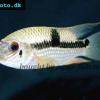 Acara
Acara  Yellow
Yellow  Patrick's
Patrick's  Blue
Blue  Green
Green 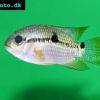 Acara
Acara  White
White  Compressed
Compressed 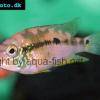 Pastel
Pastel  Midas
Midas  Red
Red  Bluemouth
Bluemouth  False
False 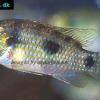 African
African  Agassiz's
Agassiz's  Banded
Banded 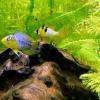 Yellow
Yellow  Cockatoo
Cockatoo  Blue
Blue  Blackstripe
Blackstripe  Highfin
Highfin  Redstripe
Redstripe  Threadfinned
Threadfinned  Macmaster’s
Macmaster’s 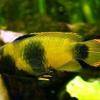 Panda
Panda  Norbert’s
Norbert’s 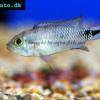 Blue
Blue  Thin-line
Thin-line  Three-striped
Three-striped  Viejita
Viejita 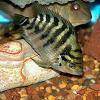 Flier
Flier  Archocentrus
Archocentrus  Convict
Convict  Seven
Seven  Spiny
Spiny  Oscar
Oscar  Sunshine
Sunshine  Chitande
Chitande  Firebird
Firebird  Midnight
Midnight  Lake
Lake  Sunshine
Sunshine  Aulonocara
Aulonocara  Nyasa
Nyasa 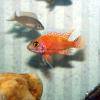 Ruby
Ruby  Grants
Grants  Aulonocranus
Aulonocranus  Chameleon
Chameleon  Benitochromis
Benitochromis  Orinoco
Orinoco  Yellow
Yellow 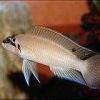 Brichard’s
Brichard’s  Guenther’s
Guenther’s  Southern
Southern  Cichla
Cichla 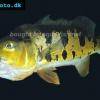 Peacock
Peacock  Chiseltooth
Chiseltooth  Bolivian
Bolivian  Red
Red  Many-pointed
Many-pointed  Jack
Jack  Red
Red  Three
Three 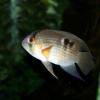 Keyhole
Keyhole  Azureus
Azureus  Red
Red  Jackson’s
Jackson’s  Crenicichla
Crenicichla  Honduran
Honduran  Blue-eye
Blue-eye  Afra
Afra 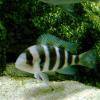 Frontosa
Frontosa  Slender
Slender  Malawi
Malawi  Chequerboard
Chequerboard  Checkerboard
Checkerboard  Malawi
Malawi  Ectodus
Ectodus  Tanganyika
Tanganyika  Canara
Canara  Green
Green  Rostratus
Rostratus  Pearl
Pearl 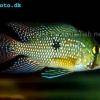 Geophagus
Geophagus  Yellowhump
Yellowhump  Suriname
Suriname  Redhump
Redhump  Red
Red  Dority’s
Dority’s  Argentine
Argentine 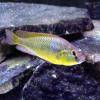 Burton’s
Burton’s  Victoria
Victoria 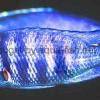 Haplochromis
Haplochromis  Jewel
Jewel  Banded
Banded 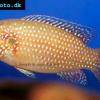 Lifalili
Lifalili  Lowland
Lowland  Texas
Texas  Pantano
Pantano  Severum
Severum  Banded
Banded 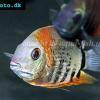 Severum
Severum  Rainbow
Rainbow  Parrot
Parrot  Chocolate
Chocolate  Brown
Brown  Marlieri
Marlieri  Golden
Golden  Striped
Striped  Masked
Masked 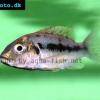 Konye
Konye  Blue
Blue  Trewavas
Trewavas  Electric
Electric  Dwarf
Dwarf  Redbreast
Redbreast  Lamprologus
Lamprologus  Gold
Gold 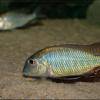 Greenface
Greenface 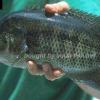 Mayan
Mayan  Aurora
Aurora  Blue
Blue  William’s
William’s 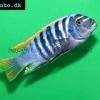 Zebra
Zebra  Malawi
Malawi  Blue
Blue 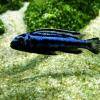 Blue
Blue  Mbuna
Mbuna  Parallel
Parallel  Purple
Purple  Bolivian
Bolivian  Ram
Ram  Basket
Basket 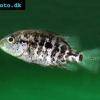 Haitian
Haitian  Zebra
Zebra  Striped
Striped  Neolamprologus
Neolamprologus  Brevis
Brevis  Fairy
Fairy 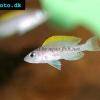 Neolamprologus
Neolamprologus  Cylindricus
Cylindricus  Hecq’s
Hecq’s  Neolamprologus
Neolamprologus  Lemon
Lemon  Mustax
Mustax  Daffodil
Daffodil  Six-bar
Six-bar  Five-bar
Five-bar  Marbled
Marbled 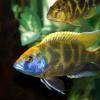 Giraffe
Giraffe  Blue
Blue  Sulphurhead
Sulphurhead  Wolf
Wolf  Jaguar
Jaguar  Blue
Blue  Marakeli
Marakeli  Madagascar
Madagascar  Pinstripe
Pinstripe  Pelmatochromis
Pelmatochromis  Kribensis
Kribensis 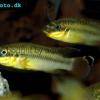 Striped
Striped  Red
Red  Deepwater
Deepwater  Fenestratus
Fenestratus  Nichols’
Nichols’  Southern
Southern  Bumble
Bumble  Demason’s
Demason’s  Slender
Slender  Red
Red  Mbuna
Mbuna  Malawi
Malawi  Kenyi
Kenyi  Powder
Powder  Altum
Altum  Angelfish
Angelfish  Angelfish
Angelfish 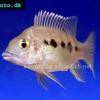 East
East  Juba
Juba  Earth
Earth 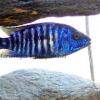 Electric
Electric  Azure
Azure 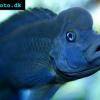 Lionhead
Lionhead  Discus
Discus  Blue
Blue  Red
Red  Zebra
Zebra  Brichard’s
Brichard’s  Blue
Blue  Firemouth
Firemouth  Zebra
Zebra  Yellow
Yellow  Blue
Blue  Dwarf
Dwarf  Blunthead
Blunthead 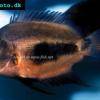 The
The  White
White  Twoband
Twoband  Fenestratus
Fenestratus  Window
Window  Tailbar
Tailbar  Black
Black  Redhead
Redhead 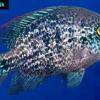 Oaxaca
Oaxaca  Xenotilapia
Xenotilapia